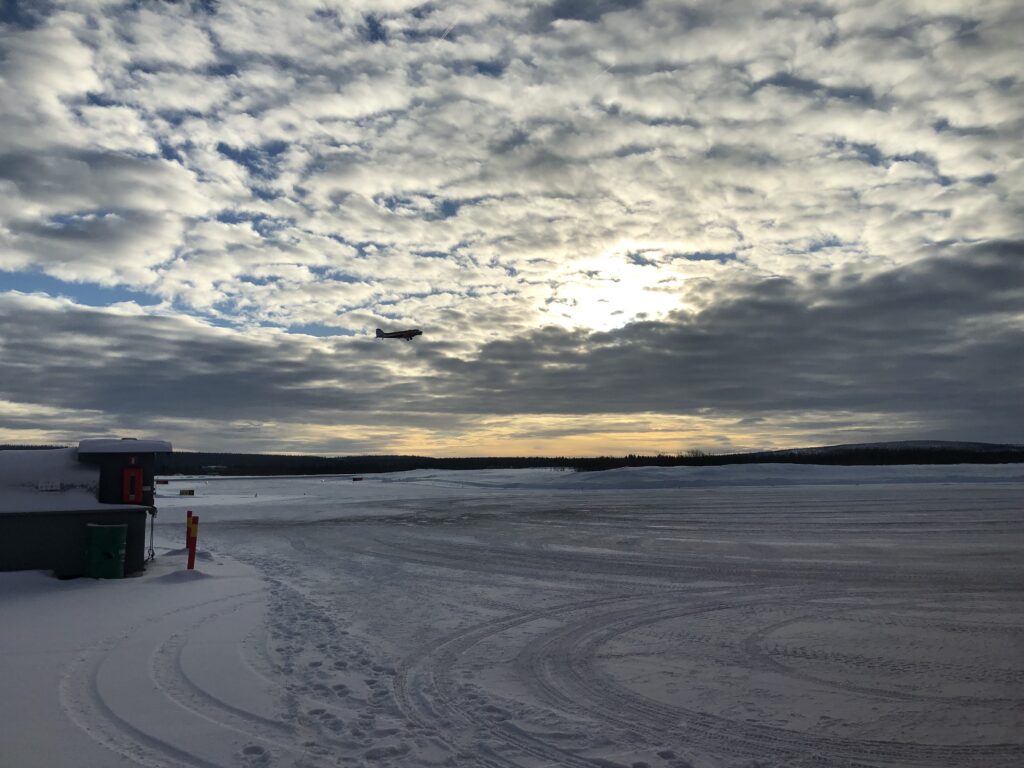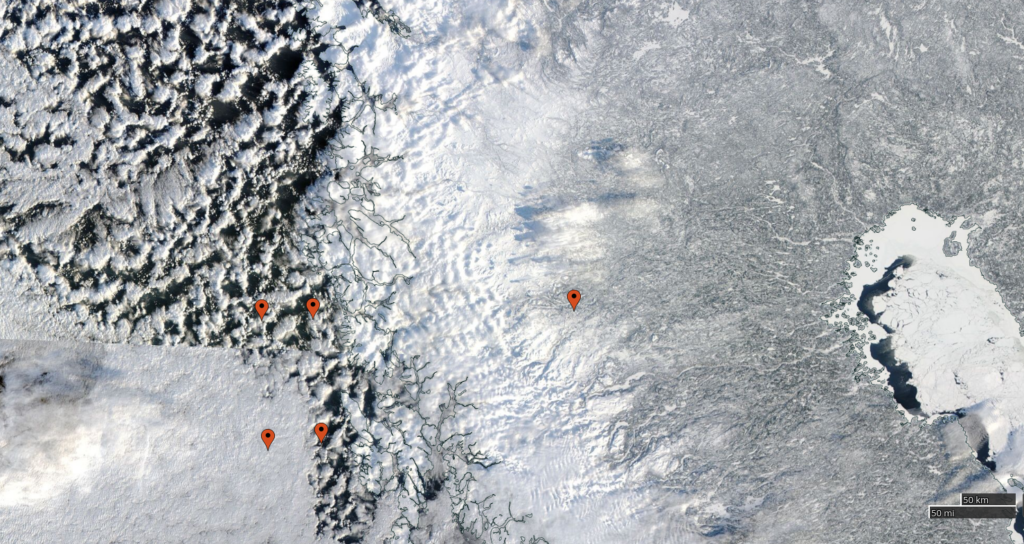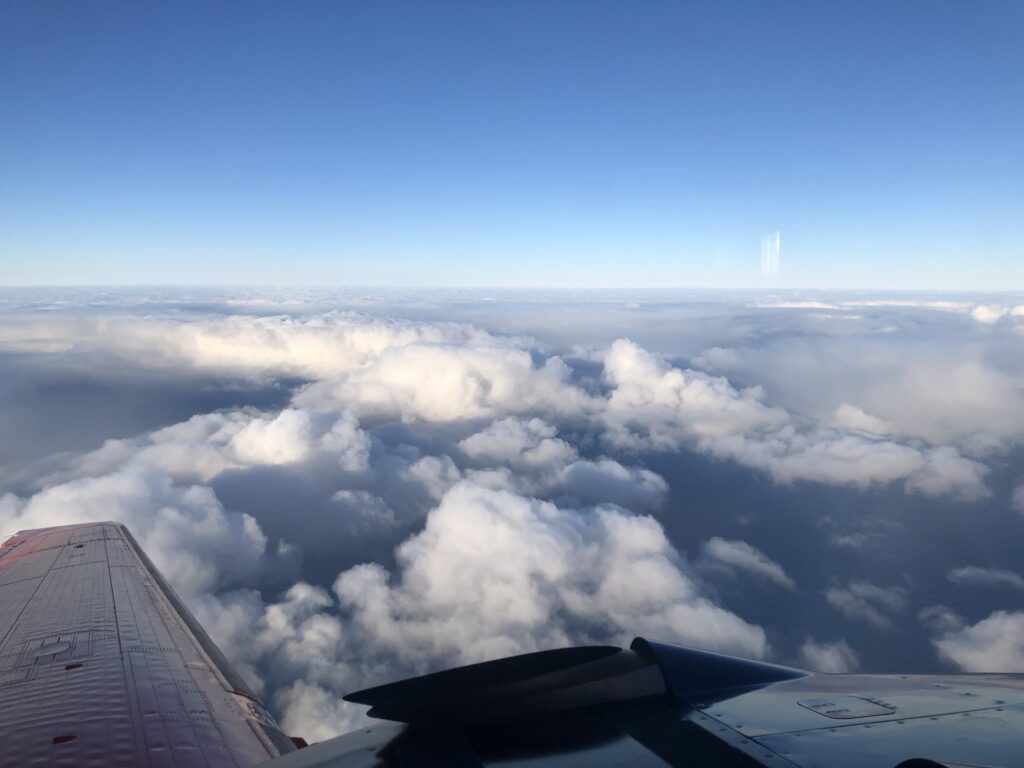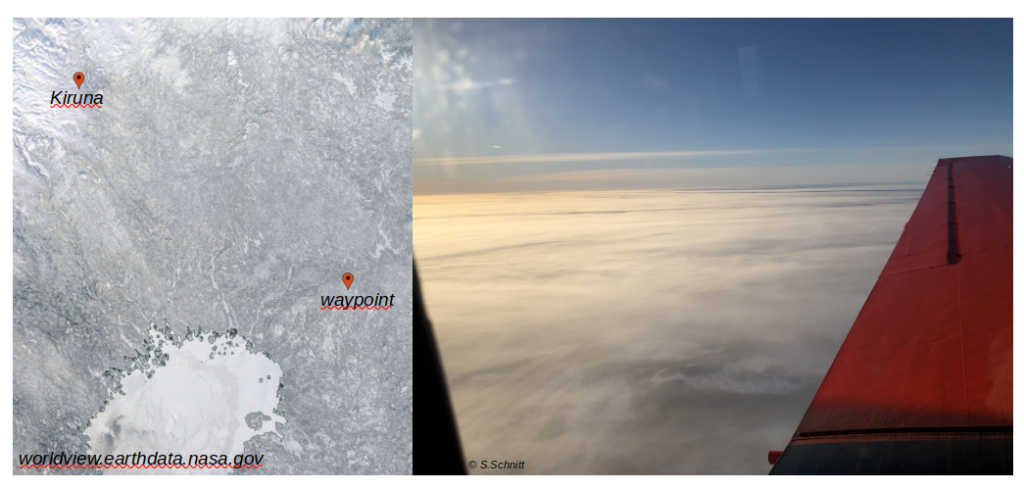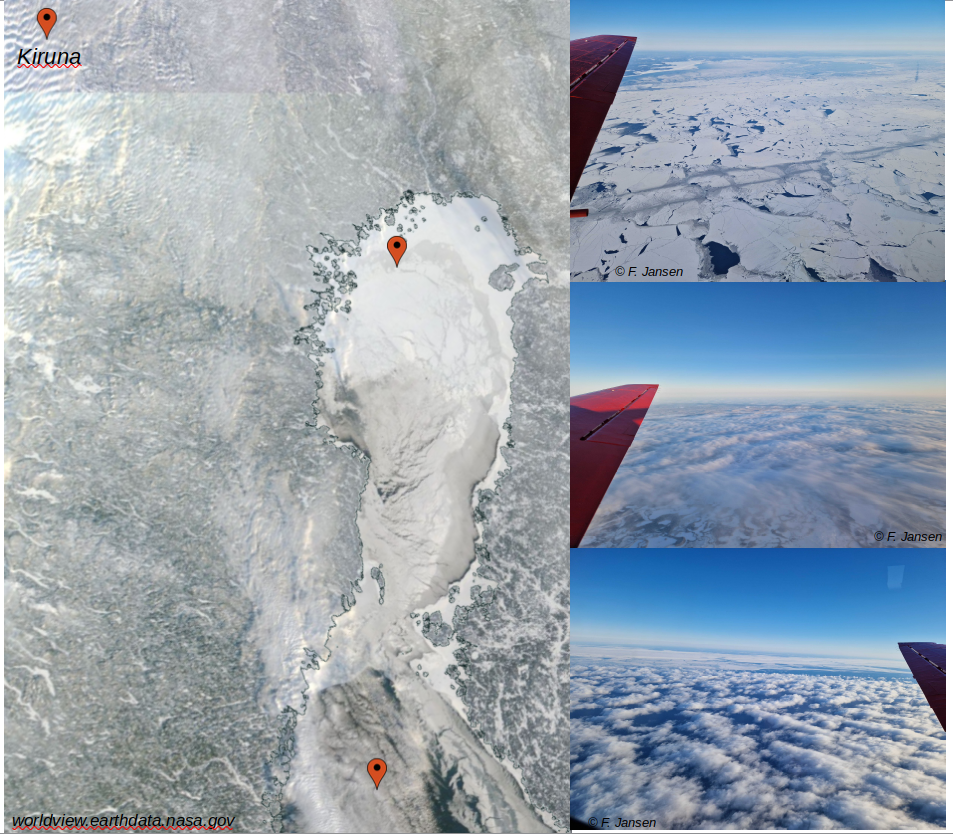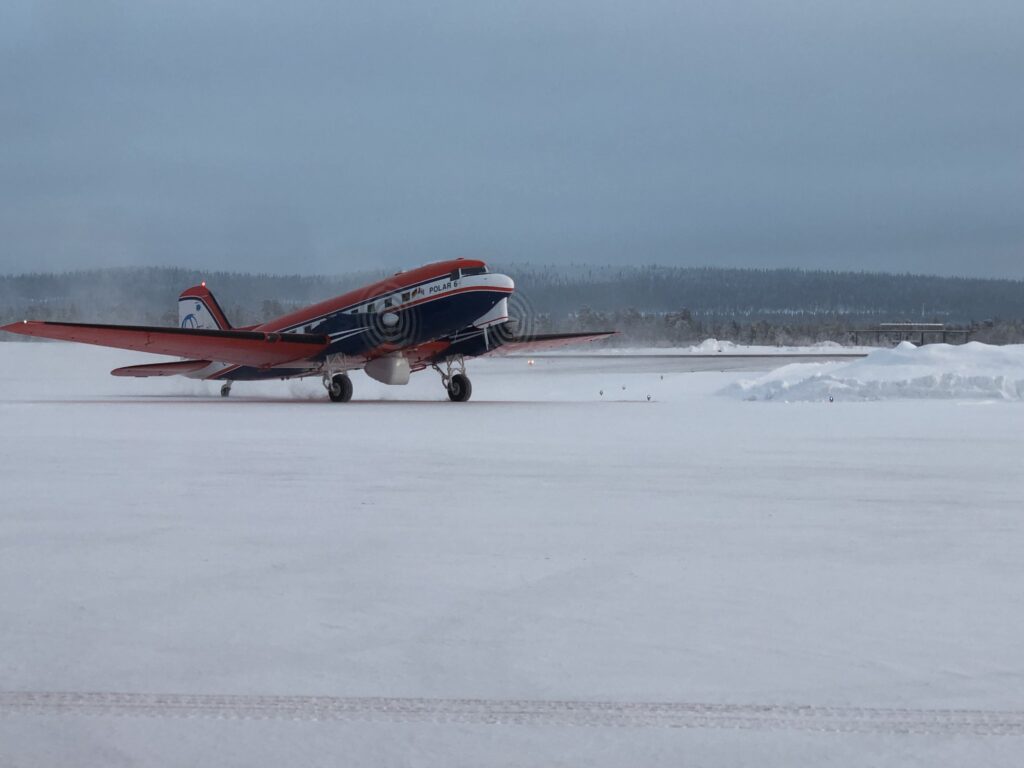Humidity profiles and Arctic Mixed-phase clouds as seen by Airborne W- and G-band radars
07. – 22.02.2024, Kiruna, Sweden
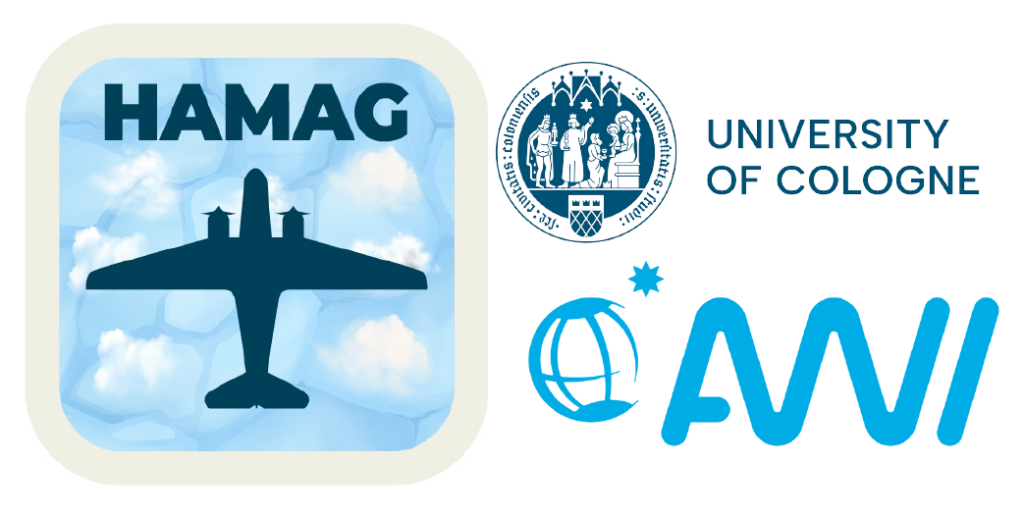
General information
The overarching objective of HAMAG is to test the University of Cologne’s novel G-band radar GRaWAC: G-band Radar for Water vapor and Arctic Clouds aboard AWI’s Polar 6 (C-GHGF) aircraft. GRaWAC will be embedded in a suite of remote sensing instruments (microwave radiometer, lidar, W-band radar) accompanied by dropped atmospheric soundings.
We will take off from Kiruna in Sweden and target mixed-phase clouds over various surfaces (ocean, sea ice in different stages) over the Gulf of Bothnian or along the Atlantic Norwegian coast depending on weather and ice conditions.
And who is we? Enthusiastic cloud scientists from the AWARES group from the Institute for Geophysics and Meteorology at University of Cologne with great support of AWI’s polar aircraft crew.
Follow our flights on flightradar!

